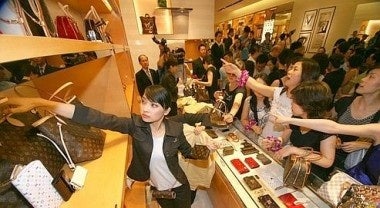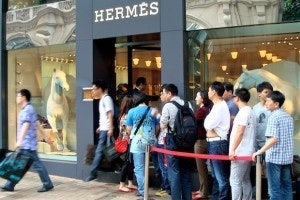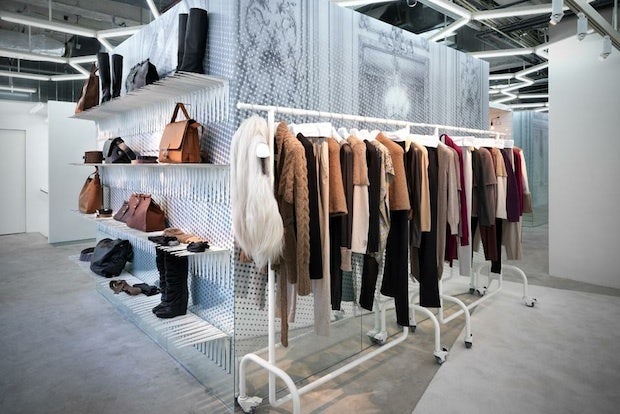
The luxury business in China is facing a natural evolution. Conspicuous logos are no longer a must for social recognition, at least in top-tier cities like Beijing and Shanghai, while -- for major brands -- retaining a luxury image is becoming increasingly difficult. As some top luxury players (e.g., Louis Vuitton) continue to invest in opening physical locations and branching out into new luxury segments, others (e.g., Hermès) have made retaining their uniqueness and rarity a key strategy. Regardless of overarching China strategy, for both sides the critical aspect is legitimizing a (very) high price point to a nebulous Chinese consumer in a still-young Chinese luxury market.
At the moment, many in the China luxury industry are keeping an eye on the divergent branding techniques used by the likes of LV and Hermès to maintain vitality and exclusivity, but also the emerging trends that see these brands fighting a common enemy: trivialization due to changing consumer trends. Here are three of the main trends and macro-level marketing strategies playing out in China at the moment, as I see them:
1. New Store Openings and Branching Out: The Louis Vuitton Strategy#
Currently, Louis Vuitton has 40 stores in China and, amid continued expansion into inland areas, the brand is looking for new ways to connote exclusivity. After branching into high-end jewelry and perfume, Louis Vuitton has recently moved into the luxury writing instruments and stationery market, competing with established brands such as Montblanc and S.T. Dupont. At first, these items will only be sold in Paris at LV's landmark store on Boulevard Saint Germain -- an area of the city frequented by writers and philosophers in the 1940s and '50s. (And, now, by Chinese outbound tourists.) Some analysts have forecast that Louis Vuitton's new luxury items, such as Baccarat crystal ink wells, combined with the fact that the range will only be sold at one store, may help the brand gain back a more exclusive image. However, as usual it will be the consumer who will decide.

2. Rarity and Uniqueness: the Hermès Strategy#
Unlike Louis Vuitton, Hermès (now with 21 locations in mainland China) has always preferred endogenous growth. Last September, Hermès Chief Executive Patrick Thomas announced that he planned to "reduce the outlet openings and focus more on their extension and renovation." This very conservative approach reflects the philosophy of the group. When supply of the brand's iconic Kelly bag, for instance, can't reach demand, Hermès prefers not to expand production. This has been instrumental in the brand's success even as competitors showed a marked slowdown this year -- in Q2 2012, Hermès sales rose some 13.4 percent.
Part of this more deliberate approach may come down to the fact that Hermès is still a family business, which partly explains the brand's current strategy of reactivity and adaptation.
3. The Decline of "Logo Social Recognition" and the Emergence of Boutique Labels#

In top-tier mainland Chinese cities, Louis Vuitton faces a "first-mover disadvantage" and a challenge to its very expensive branding efforts. To more sophisticated consumers, the LV logo has started to lose its attraction. The old "look at my logo" attitude becomes, to top-tier consumers, less important for social recognition, particularly when the brand can easily be found in every large Chinese city. As such, reaching and retaining these seasoned consumers has become a much more complicated task for luxury brands. What was "in" and "luxurious" just five years ago has become, to these shoppers, commonplace, and now we see major high-end brands fighting it out with smaller boutique labels. If pricing and prestige still involve specific demand for social recognition and status, this doesn't mean a Shanghainese consumer will have the same psychological and purchasing behavior as an entrepreneur from Wuhan.
As several converging trends take hold in China, two 150-year-old heritage brands, Louis Vuitton and Hermès, battle it out in one culturally diverse and economically unique market: China. At the end, both have one common goal -- exclusivity -- and one common fear -- trivialization.
Alexis Bonhomme is the Beijing-based general manager for Groupon-Tencent China (Groupnet), in charge of international premium brands and their digital strategies in marketing/advertising/social media/e-commerce/insights. Bonhomme works with three groups of clients: brands currently operating in China, brands planning to enter China, and brands targeting Chinese tourists.
